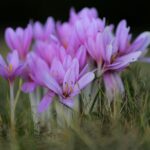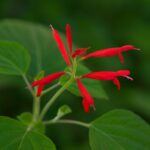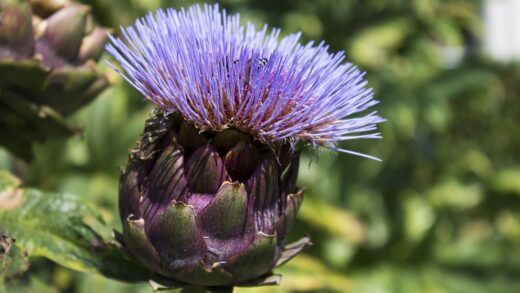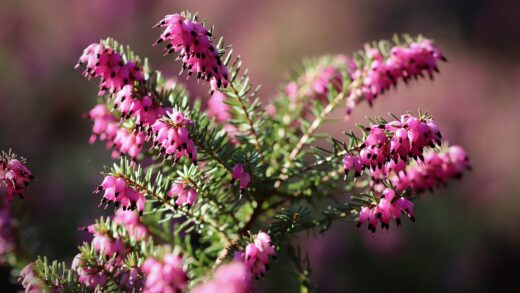French lavender, distinguished by its unique pineapple-shaped flower heads and prominent, upright bracts often likened to butterfly wings, requires a specific approach to care that differs from its more common English lavender cousins. Understanding its Mediterranean origins is the key to successfully cultivating this aromatic and visually striking plant. Unlike hardier lavender varieties, French lavender is more sensitive to cold and excessive moisture, making thoughtful site selection and soil preparation paramount for its long-term health. Providing the right balance of sun, water, and pruning will not only ensure its survival but also promote the vigorous growth and prolific blooming that make it a garden favorite.
Proper care begins with acknowledging that French lavender thrives in conditions that mimic its native habitat, which is characterized by hot, dry summers and mild, wet winters. This means it has a lower tolerance for freezing temperatures and waterlogged soil than other lavenders. The plant’s silvery-green foliage is an adaptation to intense sunlight, reflecting heat and reducing water loss. Therefore, your primary goal is to replicate these environmental cues in your garden, focusing on maximizing sun exposure and ensuring impeccable drainage to prevent root-related issues that can be fatal to the plant.
Success with French lavender also hinges on a proactive approach to its maintenance throughout the seasons. This includes a disciplined watering schedule that prevents both dehydration and over-saturation, a feeding regimen that supports growth without being excessive, and a pruning strategy that encourages a compact, bushy habit and a profusion of flowers. Neglecting any of these core aspects can lead to a leggy, unproductive plant that is more susceptible to pests and diseases. The reward for this dedicated care is a stunning display of fragrant blooms that can last from spring through late summer.
Ultimately, mastering the care of French lavender is a rewarding endeavor for any gardener willing to appreciate its specific needs. It is not a plant that can be simply placed in any garden setting and expected to flourish without intervention. By investing time in understanding its preferences for sun, soil, and moisture, and by committing to regular pruning, you can cultivate a healthy, aromatic, and breathtakingly beautiful specimen that will be a centerpiece of your garden or patio container for years to come. This dedication transforms gardening from a simple hobby into a deeper connection with the plant’s natural lifecycle.
Understanding the unique nature of french lavender
French lavender is a species that commands attention, not just for its beauty but also for its distinct botanical characteristics. Its most recognizable feature is the inflorescence, which is a dense, ovoid spike topped with a cluster of sterile bracts, creating a whimsical, winged appearance. These bracts are not true flowers but are designed to attract pollinators to the small, true flowers nestled below. This unique floral structure means its blooming period can be exceptionally long, often starting in mid-spring and continuing in flushes throughout the summer if conditions are favorable.
The foliage of French lavender is also noteworthy, typically being a grey-green or silver hue with a slightly toothed or serrated edge, which sets it apart from the smooth, linear leaves of English lavender. The leaves and stems are highly aromatic, releasing a potent camphor-like fragrance when bruised, which is different from the sweeter scent of Lavandula angustifolia. This strong scent is a natural defense mechanism, helping to deter many common garden pests and browsing animals like deer and rabbits, making it a functional as well as an ornamental choice for gardens.
From a horticultural perspective, French lavender is generally considered more tender than other common lavender species. It is typically hardy in USDA zones 8-10, meaning it cannot tolerate prolonged periods of freezing temperatures. This sensitivity to cold is a critical factor in determining how and where it can be grown, often necessitating container planting in cooler climates so it can be moved to a protected location during the winter months. Understanding this limitation is the first step in providing appropriate care and preventing winter damage or loss.
Furthermore, its growth habit is naturally dense and mounding, but it can become woody and sparse at the base over time if not pruned correctly. The plant flowers on new growth, which makes regular pruning essential for encouraging a continuous display of its signature blooms. This characteristic dictates a specific pruning schedule that differs from lavenders that bloom on old wood. Appreciating these innate traits is fundamental to developing a care routine that allows French lavender to truly thrive.
Optimal growing conditions and site selection
The single most important factor for the health of French lavender is abundant, direct sunlight. This plant is a true sun-worshipper and requires a minimum of six to eight hours of full sun each day to flourish and produce a prolific number of blooms. A south-facing location is often ideal, as it provides the most intense and prolonged light exposure. Insufficient sunlight will result in a leggy plant with sparse foliage and significantly reduced flowering, so choosing the right spot is a decision that will impact the plant’s entire life.
In addition to sunlight, excellent air circulation is crucial for preventing fungal diseases, to which French lavender can be susceptible in humid conditions. Avoid planting it in crowded garden beds where air cannot move freely around the base of the plant. Providing ample space between plants allows the foliage to dry quickly after rain or morning dew, reducing the risk of issues like botrytis or powdery mildew. This consideration is especially important in climates with high summer humidity.
The chosen site must also offer protection from harsh winter winds, particularly in the cooler parts of its growing range. While it loves sun, it can be damaged by cold, drying winds that can desiccate the foliage and cause dieback. Planting it near a protective wall or fence that still allows for full sun exposure can create a favorable microclimate. This strategic placement can make the difference between a plant that survives the winter and one that thrives year after year.
Finally, consider the soil in your selected location, as this is intrinsically linked to the plant’s success. French lavender demands well-draining, slightly alkaline to neutral soil and will quickly succumb to root rot in heavy clay or waterlogged conditions. If your native soil is dense, you must be prepared to amend it significantly or choose an alternative planting method, such as a raised bed or a container. Evaluating and preparing the site thoroughly before planting is far easier than trying to correct a poor location later.
Soil preparation and management
Preparing the right soil environment is a non-negotiable step for cultivating healthy French lavender. The ideal soil is gritty, sandy, or loamy with a pH between 6.5 and 7.5, as the plant abhors acidic conditions and “wet feet.” Before planting, conduct a simple drainage test by digging a hole and filling it with water; if it takes more than an hour to drain, the soil is too heavy and requires amendment. This initial assessment will guide your preparation efforts and prevent future problems.
To improve the drainage of heavy clay soils, you must incorporate materials that create air pockets and allow water to pass through more freely. Amending the soil with coarse sand, small gravel, or perlite is highly effective. You should also mix in a generous amount of mature compost, but avoid rich, manure-based composts, as lavender prefers lean soil. The goal is to create a loose, friable texture that mimics the dry, rocky soils of its Mediterranean home.
For container planting, selecting the right potting mix is equally critical. Use a high-quality cactus or succulent mix, as these are specifically formulated for sharp drainage. Alternatively, you can create your own mix by combining standard potting soil with equal parts perlite or coarse sand. Ensure the container has multiple large drainage holes at the bottom to allow excess water to escape without any obstruction.
Ongoing soil management involves avoiding the use of heavy organic mulches like bark chips right around the base of the plant. These materials can trap moisture against the crown, leading to rot. Instead, use a mulch of light-colored pea gravel or crushed stone. This type of mulch not only improves drainage around the plant’s base but also reflects sunlight and heat up into the plant, further simulating its preferred native conditions and keeping the crown dry.
Watering practices for healthy growth
Proper watering is a delicate balance when it comes to French lavender, as it is more sensitive to overwatering than underwatering. Once established, the plant is quite drought-tolerant, but it still requires consistent moisture, especially during its first growing season. For newly planted lavender, water deeply once or twice a week, allowing the soil to dry out moderately between waterings. This encourages the roots to grow deep into the soil in search of moisture, which builds a stronger, more resilient plant.
For established plants in garden beds, the watering frequency can be significantly reduced. In most climates, natural rainfall may be sufficient, but during extended periods of drought or extreme heat, a deep watering every two to three weeks is beneficial. The key is to check the soil moisture before watering; insert your finger a few inches into the soil, and if it feels dry at that depth, it is time to water. This method prevents the common mistake of watering on a rigid schedule rather than in response to the plant’s actual needs.
Container-grown French lavender will require more frequent watering than plants in the ground, as the soil in pots dries out much faster. During the hot summer months, you may need to water your container lavender every few days. However, the principle of checking the soil moisture first still applies. Lift the pot to gauge its weight or use the finger test to ensure the top few inches of soil are dry before adding more water.
The technique of watering is just as important as the frequency. Always water the plant at the base, directly onto the soil, and avoid wetting the foliage whenever possible. Wet foliage, especially in humid weather or overnight, can create an ideal environment for fungal diseases to develop. A soaker hose or drip irrigation system is an excellent way to deliver water directly to the root zone efficiently and without splashing the leaves.
Pruning for shape and vitality
Pruning is absolutely essential for maintaining the health, shape, and productivity of French lavender. Without regular pruning, the plant will quickly become woody at its base, with long, leggy stems and reduced flower production concentrated only at the tips. The primary goal of pruning is to encourage a dense, bushy habit and to stimulate the growth of new stems, as this is where the flowers are formed. A consistent pruning regimen is the secret to a long-lived and beautiful plant.
The best time to perform the main pruning is after the first flush of flowers has faded in late spring or early summer. This involves cutting back the entire plant by about one-third of its height, making sure to shape it into a tidy mound. This post-bloom trim not only neatens the plant’s appearance but also encourages a second, often smaller, flush of flowers later in the season. It is crucial to avoid cutting into the old, woody base of the plant, as lavender will not reliably regrow from old wood.
Throughout the blooming season, a practice known as deadheading should be performed regularly. This involves snipping off the spent flower stalks down to the next set of leaves. Deadheading prevents the plant from expending energy on seed production and redirects that energy into producing more flowers. This simple task can significantly extend the blooming period and keep the plant looking fresh and vibrant all summer long.
A second, lighter pruning can be done in the early autumn to tidy up the plant before winter, especially in milder climates. This should be a very light trim, removing any final spent blooms and shaping any errant stems. Avoid any hard pruning in the fall, as this can stimulate new growth that will be too tender to survive the winter cold. This final shaping helps prevent snow or wind damage to the branches during the dormant season.
Seasonal care considerations
As the seasons change, so do the care requirements of your French lavender. In the spring, as new growth emerges, it is the perfect time to assess any potential winter damage. You can prune away any dead or desiccated stems, making clean cuts back to healthy, living tissue. This is also the time to apply a light dressing of a balanced, slow-release fertilizer or a top-dressing of compost to support the upcoming season of vigorous growth and flowering.
During the peak of summer, the primary focus shifts to monitoring water needs and deadheading. In periods of intense heat and sun, even established plants may show signs of stress, such as slight wilting. While drought-tolerant, a deep watering during these times can be beneficial. Consistent deadheading throughout the summer months is crucial for encouraging continuous blooming and maintaining the plant’s energy reserves for foliage and root health rather than seed production.
As autumn approaches, you should begin to taper off both watering and fertilizing. This signals to the plant that it is time to slow down its growth and prepare for dormancy. This is also the time for a final, light pruning to shape the plant and remove spent flower stalks, which helps to improve air circulation and prevent potential disease issues during the wetter, cooler months. For plants in containers, this is the time to start planning their move to a protected winter location.
Winter care for French lavender depends heavily on your climate zone. In areas where it is borderline hardy, providing a layer of mulch like straw or pine boughs (after the ground has frozen) can help insulate the root system from freeze-thaw cycles. For container plants in cold climates, moving them into an unheated garage, shed, or a sheltered porch is essential for survival. During this dormant period, they require very little water, just enough to keep the soil from becoming completely bone dry.


















